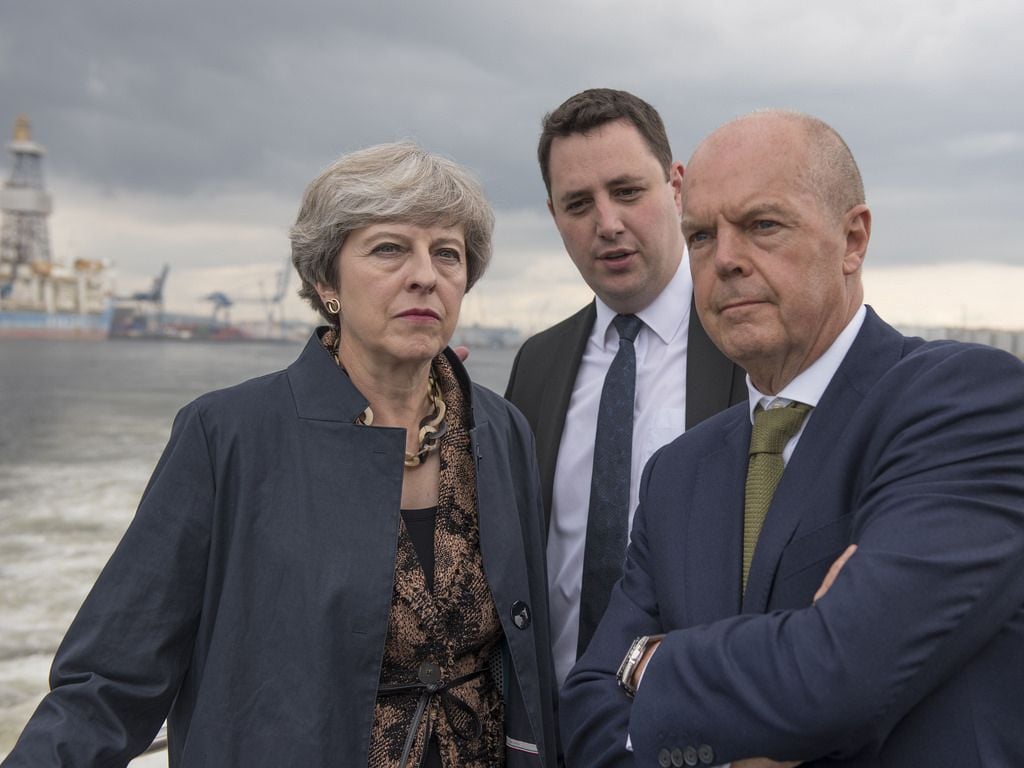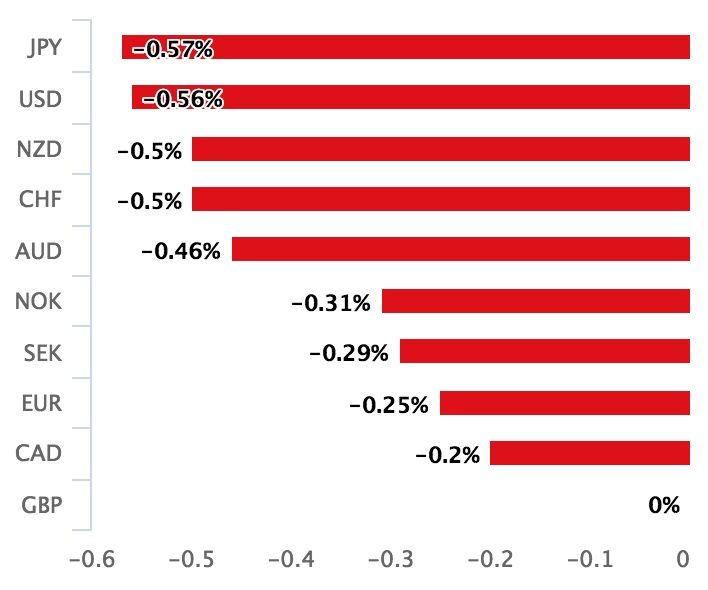The Pound Suffers Profit-Taking, May Said to be Putting Brexit Talks on 'Go Slow'

Image © Lee Goddard / Number 10 Downing Street
- May seen to be slowing pace of Brexit talks
- Markets to remain nervous ahead of key October E.U. summit
- Euro also seen struggling amidst ongoing Italian budget concerns
Reports Monday concerning Brexit have given foreign exchange traders an excuse to trigger profit-taking on Sterling's recent multi-day rally, however we do not believe Pound Sterling is in danger of and substantial decline as of yet.
The Pound was seen trading lower against all major currencies on signs the U.K. was pulling the reins on the pace of Brexit negotiations.
Tom Newton Dunn, Political Editor of The Sun, reports "Theresa May appears to have put Brexit talks on go-slow again."
Dunn cites the Prime Minister's office as saying:
1. No Raab visit to Brussels this week confirmed
2. PM wants “a precise future framework”
3. There may not be a deal at the EU Council next week after all, only a commitment for one “this Autumn”.
"Negative GBP headlines emerging that an Irish border deal this week may be wishful thinking. Watch this space - could fuel a bit of profit-taking and GBP de-risking," says Viraj Patel, a foreign exchange strategist with ING Bank N.V
Markets will be sensitive to headlines ahead of new week's European Council meeting, with Brexit being the topic of a pre-summit meeting on Wednesday 17.
We expect market nerves to be on edge until this point.
At the time of writing, the Pound-to-Euro exchange rate trades at 1.1361, the day's high is set at the 1.1392 while the Pound-to-Dollar exchange rate trades at 1.3042, the day's high is set at 1.3133.

However we believe there is some cause to believe dips in the value of Sterling will be shallow with many GBP exchange rate pairs now in technical uptrends which will require some notably negative headlines or global developments to break.
Brexit negotiations remain front-and-centre for Sterling and an ongoing assessment by the foreign exchange market that the E.U. and U.K. will reach a deal come year-end has lifted Sterling to fresh multi-week highs against the Euro and back above 1.31 against the Dollar.
"Recent developments are encouraging as they help to dampen the risk of a more disorderly no deal Brexit outcome. A Brexit breakthrough in the coming weeks would open up further upside potential for the Pound heading into year end," says Lee Hardman, a foreign exchange strategist with MUFG.
Positive headline developments out over the weekend include:
1) European Commission President Juncker saying he sees a deal before year-end
2) European Council President Tusk saying "I think there is a chance to have an accord by the end of the year."
3) Ireland's Deputy P.M. Coveney saying talks are 90% complete
The current market conditions determining movement in the Pound are highly reminiscent of this time one year ago when negotiators were looking to meet a series of soft deadlines ahead of a hard deadline at the December E.U. summit.
The Pound would move higher and lower on headlines - qualified or not - only for negotiators to cross the finish line typically late.
We see little reason to doubt that this type of tiring ping-pong price action will again be repeated in 2018 so we look for near-term volatility over coming weeks to remain a feature but expect a pro-Sterling outcome to cap off the year.
However, according to consensus forecasts from 48 of the world's leading investment banks, the Pound is above levels where it is forecast to end 2018 against both the Dollar and Euro. For insights into where consensus are seeing Sterling headed, and the targets set by the likes of Citi, Goldman Sachs and HSBC, please see a special report compiled by Horizon Currency: Euro forecasts | Dollar Forecasts.
Italian Budget Spat to Keep Euro Under Pressure
While Sterling is underperforming, we note the Euro is another laggard with concerns over Italy's proposed fiscal budget continuing to weigh on sentiment.
Italy's borrowing costs soared on Monday, bank stocks tumbled and the Euro weakened as a war of words between Rome and the European Union over Italian budget plans escalated.
Italian bond yields jumped by as much as 30 basis points, and the Italian/German 10-year bond yield gap – a closely watched measure of country risks – blew out to more than 300 bps.
"There has been an impressive degree of co-movement between EUR/USD and the Italian risk premium ever since the previous Italian parliament was dissolved last December," says Paul Meggyesi, a forign exchange strategist with J.P. Morgan.
Italian Deputy Prime Minister Matteo Salvini, speaking at a press conference with French far-right leader Marine Le Pen, on Monday denounced European Commission President Jean-Claude Juncker and Economics Commissioner Pierre Moscovici as enemies of Europe.
The Commission has told Italy it is concerned over its budget deficit plans for the next three years since they breach what the EU asked the country to do in July.
Salvini also said on Monday Italy would not cave in to market pressure and backtrack on its plans to increase deficit spending next year.
"In our judgement the noise surrounding Italy's fiscal plans is liable to remain a tactical hazard for the Euro, at least over the coming four-six week period," says Meggyesi.
However, Meggyesi believes that the stresses on the Euro caused by Italy are likely to be short-term in nature as the frictions over the budget do not necessary pose a long-term structural risk.
This view is shared by other analysts.
"As far as political risks are concerned, the approval of the Italian budget law and rating agency reviews may create some noise in the weeks ahead, but lasting pressure on EUR-USD from the situation in Italy is unlikely as long as there is no contagion to the rest of the EMU periphery," says Kathrin Goretzki, an FX Strategist with UniCredit Bank in London.
We remain wary of a point in time when markets start to move on from the Italian story and the Euro enjoys a robust recovery.
Advertisement
Lock in Sterling's current levels ahead of potential declines: Get up to 5% more foreign exchange for international payments by using a specialist provider to get closer to the real market rate and avoid the gaping spreads charged by your bank when providing currency. Learn more here
